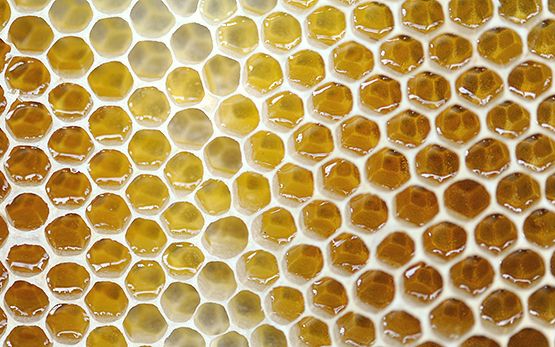Der Wassergehalt des von den Pflanzen produzierten Nektars kann variieren. Um seine Konservierung in den Waben zu gewährleisten, darf er nicht gären. Deshalb wird er von den Bienen in Honig umgewandelt, indem sie seinen Wassergehalt senken und folglich den Zuckergehalt erhöhen. Dies verhindert die Entwicklung der Mikroorganismen. In der Dunkelheit des Bienenstocks ist es schwierig, den Herstellungsprozess des Honigs zu beobachten. Aus diesem Grund ist er auch nur wenig erforscht. Um die Umwandlung von Nektar in Honig zu untersuchen, haben wir die Technik der Tomographie eingesetzt. Sie ermöglicht es, den Zuckergehalt des eingelagerten Nektars sehr präzise zu messen, ohne den Bienenstock öffnen zu müssen und das Bienenvolk zu stören.

Pubblicazioni Pierre Mariotte
Mariotte P., Frick R., Vitra M., Meisser M., Probo M.
Quels sont les effets de la sécheresse sur la production fourragère en Suisse et quelles pratiques les agriculteurs peuvent-ils adopter pour faire face au manque d’eau ?
In: Journées de Printemps de l'AFPF 2020. 25-26 mars, Ed. IDELE. 2020, 1-8.
Scheuner K., Mariotte P.
Préparer maintenant la récolte 2022.
Bioactualités, 5, 2020, 14-15.
Mariotte P., Creswell T., Johansen M.P., Harisson J.J., Keitel C., Dijkstra F.A.
Plant uptake of nitrogen and phosphorus among grassland species affected by drought along a soil available phosphorus gradient.
Plant and Soil, 448, 2020, 121-132.
Feng W., Mariotte P., Xu L., Buttler A., Bragazza L., Jiang J., Santonja M.
Seasonal variability of groundwater level effects on the growth of Carex cinerascens in lake wetlands.
Ecology and Evolution, 10, 2020, 517-526.
Liang M., Gornish ES, Mariotte P., Chen J., Liang C.
Foliar nutrient content mediates grazing effects on species dominance and plant community biomass.
Rangeland Ecology & Management, 72, 2019, 899-906.
Vitra A., Deléglise C., Meisser M., Risch AC., Signarbieux C., Lamacque L., Delzon S., Buttler A., Mariotte P.
Responses of plant leaf economic and hydraulic traits mediate the effects of early- and late-season drought on grassland productivity.
AoB Plants, 11, (3), 2019, 1-15.
Buttler A., Mariotte P., Meisser M., Guillaume T., Signarbieux C., Vitra A., Preux S., Mercier G., Quezada J., Bragazza L., Gavazov K.
Drought-induced decline of productivity in the dominant grassland species Lolium perenne L. depends on soil type and prevailing climatic conditions.
Soil Biology and Biochemistry, 132, (May), 2019, 45-57.
Schenkel D, Deveau A., Niimi J., Mariotte P., Vitra A., Meisser M., Buttler A., Splivallo R.
Linking soil's volatilome to microbes and plant roots highlights the importance of microbes as emitters of belowground volatile signals.
Environmental Microbiology, 21, (9), 2019, 3313-3327.
Meisser M., Vitra A., Deléglise C., Dubois S., Probo M., Mosimann E., Buttler A., Mariotte P.
Nutrient limitations induced by drought affect forage N and P differently in two permanent grasslands.
Agriculture, Ecosystems & Environment, 280, 2019, 85-94.
Huguenin-Elie O., Studer B., Kölliker R., Reheul D., Probo M., Barre P., Feuerstein U., Roldán-Ruiz I., Mariotte P., Hopkins A.
Improving sown grasslands through breeding and management: Proceedings of the Joint 20th Symposium of the European Grassland Federation and the 33rd Meeting of the EUCARPIA Section ‘Fodder Crops and Amenity Grasses’, Zürich, Switzerlan, 24-27 June 2019.
European Grassland Federation EGF, W. Kessler, Federation Secretary, c/o Agroscope, Zurich, Switzerland. 2019, 558 pp.






